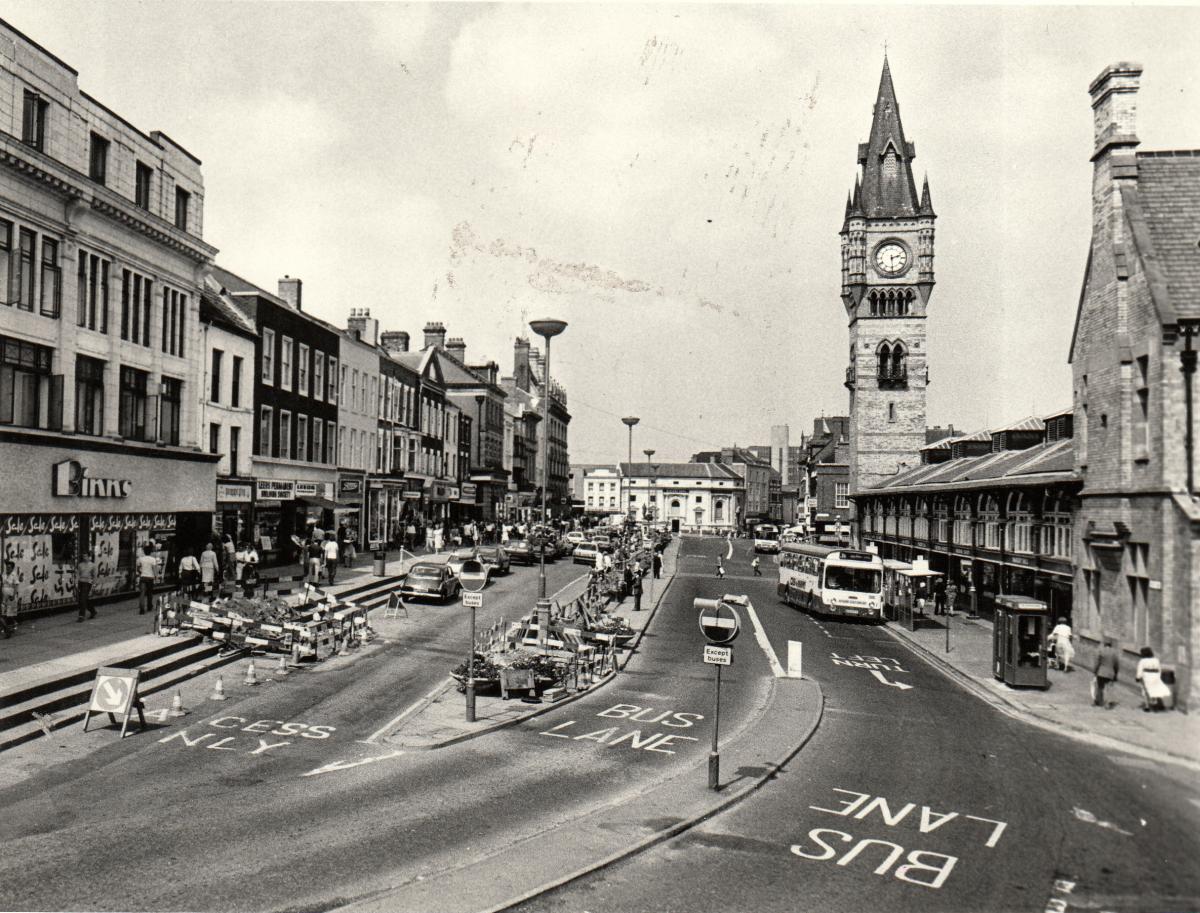THE announcement of House of Fraser’s closure in Darlington and Middlesbrough is, without exaggeration, the end of a retailing era.
After more than 200 years, the name of Binns – once the Harrods of the North-East – will disappear, and in Darlington, the closure marks the end of a retailing story that dates back to 1770.
Beyond that, the demise of the department store could be the death of the town centre high street as generations of shoppers have understood it. For decades, Binns has been one of the great bookends of Darlington’s high street – the other, of course, is M&S, which was pulled away only a fortnight ago. What will tumble next?
Binns was a great regional institution. It was formed by Quaker draper George Binns in Sunderland in 1807, and, powered by the most blunt slogan in advertising history – “Shop at Binns” was plastered over the front of trams and buses – it spread to many towns in the 1920s. It was a cut above other shops; it was the place to buy for that special occasion.
In August 1922, Binns expanded into Darlington, taking over Arthur Sanders’ drapery business, a family affair which had gone into liquidation having been founded in 1770.
Similarly in Middlesbrough, in 1923, Binns took over the Thomas Jones drapery store and established its name there.
In Darlington, the old store, just a couple of doors from the southern corner of High Row, was rebuilt for £15,000 – but it only lasted a couple of years as on January 24, 1925, the largest fire for a generation broke out at its rear.
"Bursting out at ten o'clock," reported the Darlington and Stockton Times, "it had the effect of providing a thrilling night's entertainment for many thousands. Without doubt, the mass of people congregated in and about High Row, Blackwellgate and Skinnergate at eleven o'clock was the largest seen in Darlington."
Being about closing time on a Saturday night, some of the town's young men were rather under the influence. David Black, 28, of York Street, decided to climb up a fireman's ladder, climb over the top of the fireman and onto the burning roof. He was then seen by the crowd wandering quite calmly around peering into windows as flames shot out.
Magistrates later fined him £2. "I plead guilty to being drunk," he said, "but I don't remember seeing the fire."
As well as their new store, Binns had lost £50,000-worth of stock. Undeterred, the company pressed on with its expansion plans. Even before the fire, it had been buying up property on the corner and, on the Monday morning after the fire, one of those properties which had been trading as the Parisian Mantle Company suddenly reopened under the Binns brand.
The fire forced Binns hand, and it had to get building – even though it hadn’t bought all the properties on the corner. By November 1925, its spanking new store was open, built in the classic white brick that defines department stores of this era – they all tried to emulate the look of Selfridges, the king of the department stores, which had opened in Oxford Street in London in 1909.
But, the new store had to wrap itself around those properties that Binns had yet to buy: Sidgwick’s drapery had obstinately refused to sell up on High Row, while on the Blackwellgate end, T Woods and Boots also refused to shift.
Sidgwick’s and Boots caved in around 1935, and were rebuilt by Binns so you can barely see the join, but T Wood, a photographer in marvellous mock-timber building, held out. When he finally closed in 1953 that Binns bought his premises, but it wasn’t until 1973 that his store was rebuilt.
The rebuilding required Europe's largest crane, 175ft high with a 150ft jib, which needed 200 tons of concrete ballast to keep it upright as it dropped in the steel girders and the escalators.
Binns blended it in terms of colour and scale, but as this was the brutalist 1970s, they couldn’t bring themselves to add adornments or twiddlybits, and so, once you’ve noticed it, it stands out like a sore thumb.
Binns itself had been bought out in 1953 by House of Fraser, which gradually became the dominant name on the North-East high streets. For example, in 1957 when the Middlesbrough store was rebuilt in Linthorpe Road in the classic departmental style, it reopened as House of Fraser.
Binns’ historic headquarters in Sunderland closed in 1993, and since 2006, Darlington’s has been the only branch left to bear the name of Binns.
The name was threatened in 2016 when House of Fraser did a near £1m refit on the High Row store, but public pressure ensured that it stayed, although relegated in prominence.
Now, though, all that history is to come to an end, as the bookend that is Binns is pulled away. Can the High Row live on with nothing at either end holding it together?
What do you think of plans to close Binns in Darlington and Middlesbrough?
What do you think of plans to close Binns in Darlington and Middlesbrough?














Comments: Our rules
We want our comments to be a lively and valuable part of our community - a place where readers can debate and engage with the most important local issues. The ability to comment on our stories is a privilege, not a right, however, and that privilege may be withdrawn if it is abused or misused.
Please report any comments that break our rules.
Read the rules hereLast Updated:
Report this comment Cancel